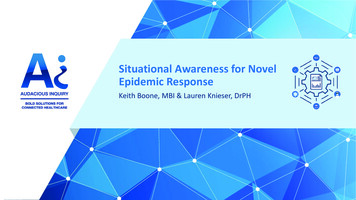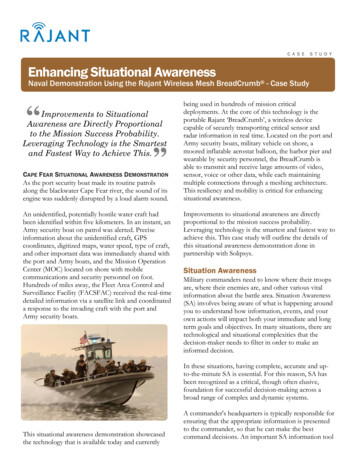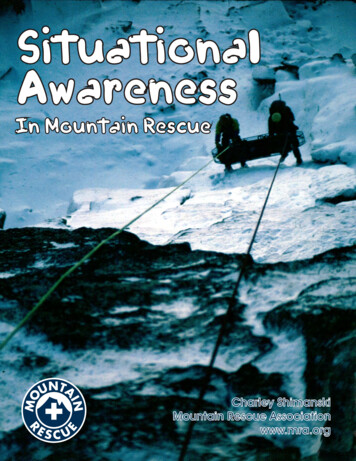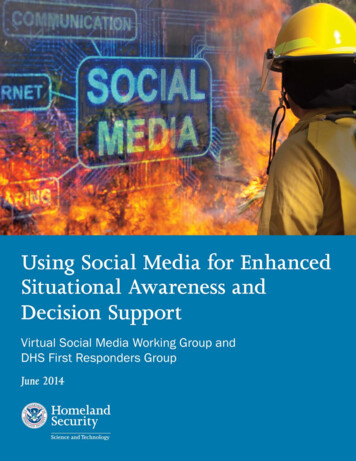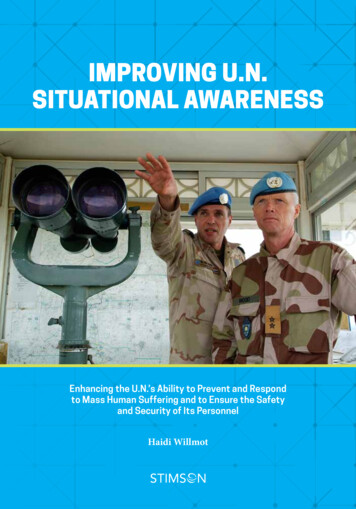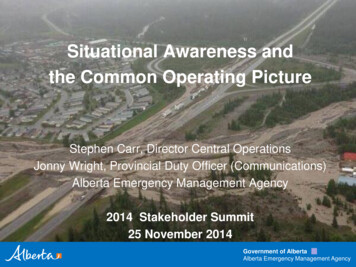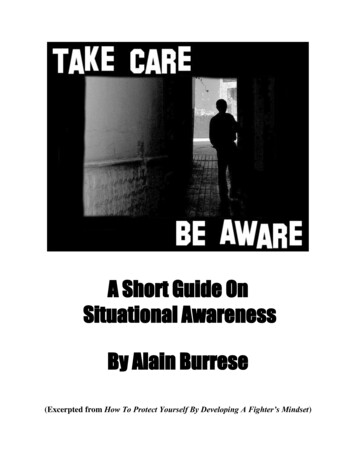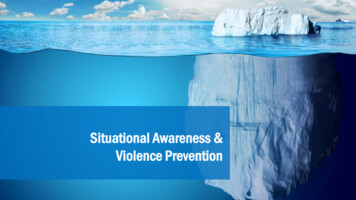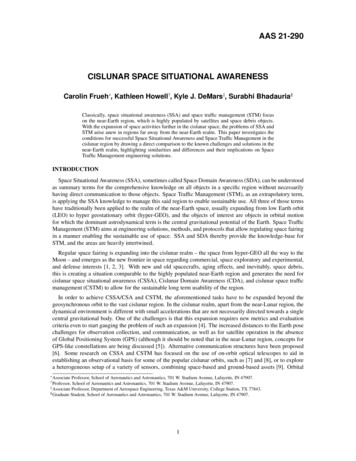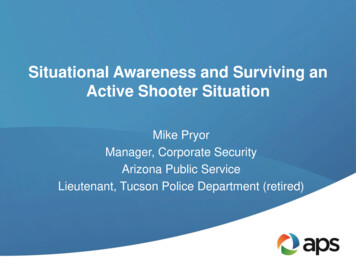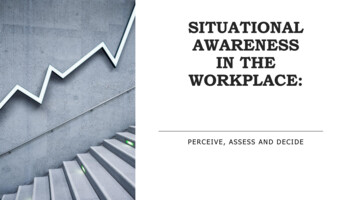
Transcription
SITUATIONALAWARENESSIN THEWORKPLACE:P E R C E I V E , A SS E SS A N D D E C I D E
“Awareness is a key ingredient insuccess. If you have it, teach it, ifyou lack it, seek it.”- MICHAEL B. KITSON
OBJECTIVESExplain the strategies of SAIdentify how to perceive your surroundings, assess the situation anddecide how to actDiscuss how to improve your SA in the workplace and your home lifeList how to use and direct your senses to train for observation
WHAT IS SITUATIONAL AWARENESSKnowing what is going on around us:Draw a mental map Where are you? What surrounds you? What challenges lie ahead?See clearly what is happening and develop an effective coping plan
BEFORE SITUATIONALAWARENESSEMOTIONAL INTELLIGENCEThe ability to tune into your emotions and be aware of emotions of othersSocial skill mixed with self-awareness
EMOTIONAL pbuildingSocialconnection
Personal ExperienceEMPATHY Feelings ResponseACTIVELISTENING Details BodyLanguage Tone of VoiceSOCIALAWARENESS Vibe EmotionalSignals
RESPONSE THROUGHSITUATIONAL AWARENESSIs it better to speak or be silent?Should I step forward or back?What could go wrong?
HOW TO DEVELOP SITUATIONALAWARENESSDetermine where you are mentallyBring your mind back to the presentPerceive all factors at this precise moment How do I feel right now? What influences this emotional state? Is there a threat (physical, mental, emotional)? What hope do I have?
PERCEIVEIn order to perceive one must be vigilant Don’t get trapped in old behaviorsHear what you want to hear – see what you want to seeFocus on one thing – missing the big pictureWalking and Texting reduce interpretation of visual clues by 48.3%
ASSESSProcess information to understand the meaningInterpret the information to make sense of it –recognize key patternsEnvironmental changes – understand theconnections between people, places and thingsSometimes you need to dig into your past to breakold schemes
DECIDEFocused on the Future – Combine objective data with intuitionTake note of the environmentAnticipate it’s trajectoryAct accordingly
SITUATIONAL AWARENESS ANDYOUR SENSESSenses must be turned onSenses must be tuned inYour brain gives you the whole picture, but you only take in certain stimuliwhile ignoring otherse.g. How many times have you walked past your carbut don’t remember your license plate number when someoneasks?To strengthen situational awareness, you must be truly intentional;consciously utilize and direct all your senses
SightSoundSmell Eyes don’toperate likecameras Brain ignoresthings in ourenvironment Train ourselvesto look forthings we’dnormally miss More essential Attuned to oursurroundings Brain’s firstresponsesystem Trigger avisceralemotionalresponse Little respectand lessattention Connectsdirectly to brain Smell-inducedmemories Identify threats– smoke, gas,etc.
TasteTouchAlthough incredibly enriching to live more mindfully and to befully immersed in experiences, these senses do not havemuch purpose in Situational Awareness.
MASTERING SITUATIONALAWARENESSLearning how to: Observe Interpret Remember
OBSERVE - EXPAND ANDENHANCE YOUR VISION Eliminate tunnel vision Intentionally look for details in your environmentFrom the Boy Scout Fieldbook:Learn to scan the ground in front of you Let our eyes roam slowly in a halfcircle from right to left over a norrow strip of land directly before you. Thensweep left to right over the ground further away.
OBSERVE/INTERPRET EYEWITNESS TEST – TEAM ACTIVITYInvite someone your team doesn’t know to your team meeting.Have them come in for a few minutes then leave.Have everyone write down a physical description of the strangerHave everyone write down their interpretation of the interactionSee how accurate they are.
REMEMBER - WHOSE NOSEKNOWS? – TEAM ACTIVITYHave someone fill cups with a variety of fragrant materials.Examples: Citrus rind, onion, coffee, spices, grass, etc.Hand cups to blindfolded participants, who take a sniff, and pass the cupon.When the cups have been recollected, the participants write down what theysmelled.Note: They should not write down the smells immediately after passing thecup.This is a memory quiz.
BARRIERS TO SITUATIONALAWARENESSCognitive OverloadEmotional Overload
BARRIERS TO SITUATIONALAWARENESSCognitive OverloadEmotional Overload Distractions Expectation Focus on single stimulus Lose sight of directions that vary One prevails One is a blur Biased perception – ignore differentdangers Decreased EI Stress
SITUATIONAL AWARENESS INSTRESSFUL SITUATIONSEmbrace a serene attitudeKeep an attentive but relaxed gazeDiscretely distance yourself from the reality you are evaluatingReduced stress allows: Broader perception Broader perspective Viable plan of action
SUMMARYSituational Awareness is the ability to see clearly what ishappening around you, giving you the ability to develop aneffective plan within a split second.It gives you the ability to see from the bottom up, everything thatis around you, with more perspective.That perspective allows you to clearly assess the situation to makea practical and informed decision.
THANK YOUMargaret Blaetz, CLC, MLT(AMT), MLT, MCM(ASCP), CCCP(AAPOL)East Coast Clinical Consultants, nsultants.comPreprogen, LLCmargaretb@preprogen.uswww.Preprogen.us
Situational Awareness is the ability to see clearly what is happening around you, giving you the ability to develop an effective plan within a split second. It gives you the ability to see from the bottom
